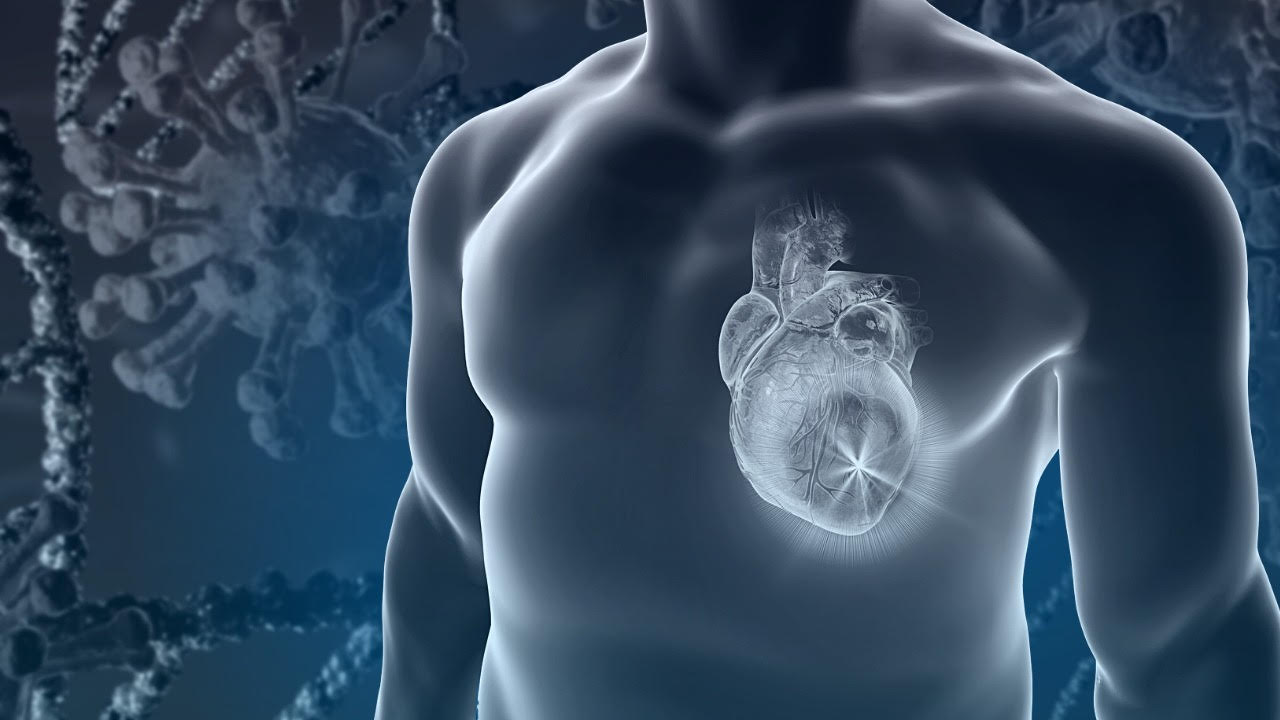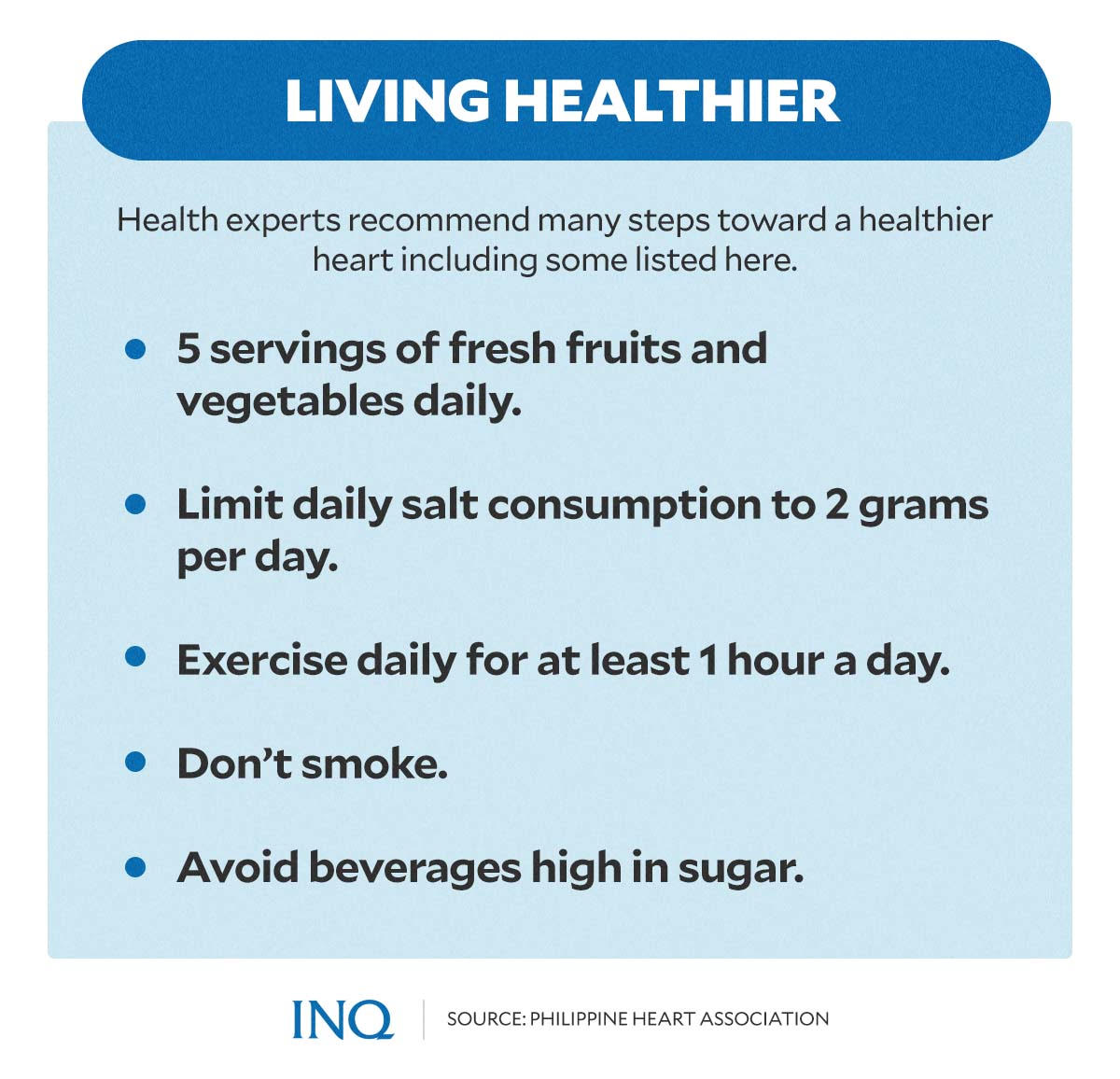PH Heart Month: Heart disease death toll dwarfs COVID’s
MANILA, Philippines—Heart is the most common symbol associated with the month of February, mainly due to the annual global celebration of Valentine’s Day.
However, in the Philippines, the heart is associated with the month of February not only because of the popular holiday for love but also to raise awareness of heart disease as a serious and growing health concern among Filipinos.
February was declared Philippine Heart Month by Proclamation No. 1096 signed on Jan. 9, 1973.
“[T]he heart is the seat of life, and the growing prevalence of heart cases among our people should be attended to with urgency. [T]here should be national awareness to this serious health problem through a program of emphasis and continuing research and education,” the proclamation read.
“[T]he true wealth of a nation is the health of its people and a nation can stand only as strong and healthy as its people are strong and healthy,” it added.
According to the Philippine Heart Association (PHA), the organization tasked with leading the annual observation along with the Department of Health (DOH) and the Heart Foundation of the Philippines, this year marks the 49th observation of the Philippine Heart Month.
“Heart month is PHA’s (Philippine Heart Association) oldest advocacy program. A traditional event that has withstood the test of time,” said cardiologist Dr. Ricky Tiongco in a recent online seminar hosted by PHA.
Kills more than COVID-19 in PH
Preliminary data released by the Philippine Statistics Authority (PSA) in January showed that ischemic heart disease was the leading cause of death in the country from January to October 2021.
Ischemic heart disease, according to American Heart Association, refers to heart problems caused by narrowed heart arteries—which could then result in less blood and oxygen reaching the heart muscle.
It is also known as coronary artery disease and coronary heart disease, among types of cardiovascular diseases (CVD).
From January to October 2021, there were 110,332 deaths caused by ischemic heart disease, or 18.3 percent of total deaths in the Philippines.
The figures were 28 percent higher than the 86,164 deaths due to ischemic heart disease, or 16.9 percent of total deaths, in the same period in 2020.
“Cardiovascular disease is currently the number one cause of death in the Philippines. Responsible for about a third of all deaths each year,” said Dr. Maria Elizabeth Caluag, non-communicable disease division chief, Department of Health (DOH).
“In 2018, there were 186,622 deaths due to CVD. Even during the pandemic, CVD persisted to be the leading cause of death, killing more people than COVID-19 in 2021,” Caluag added.
Data from PSA showed that there were 51,514 deaths due to COVID-19, or 8.5 percent of total deaths during the first 10 months of 2021.
Understanding CVDs
According to Dr. Rodney Jimenez, treasurer and research committee chair of PHA, CVD is a range of diseases that affect the heart and blood vessels.
These groups of diseases are primarily caused by atherosclerosis or the build-up of plaque of bad cholesterol in blood vessels.
“Atherosclerosis blocks blood flow to the heart and to the brain, which can be fatal,” said Jimenez.
The lack of blood flow to the heart and to the brain could lead to heart attack or stroke.
The World Health Organization (WHO) listed types of disorders grouped under CVDs, which included:
- coronary heart disease (ischemic heart disease): a disease of the blood vessels supplying the heart muscle
- cerebrovascular disease: a disease of the blood vessels supplying the brain
- peripheral arterial disease: a disease of blood vessels supplying the arms and legs
- rheumatic heart disease: damage to the heart muscle and heart valves from rheumatic fever, caused by streptococcal bacteria
- congenital heart disease: birth defects that affect the normal development and functioning of the heart caused by malformations of
- the heart structure from birth
- deep vein thrombosis and pulmonary embolism: blood clots in the leg veins, which can dislodge and move to the heart and lungs
Jimenez also noted that CVD can be caused by risk factors that cannot be controlled like family history, age, and gender.
However, it can also be due to several risk factors that can be controlled, such as:
- unhealthy diet (too fatty, too salty, too sweet)
- lack of exercise
- obesity (due to unhealthy diet and lack of exercise)
- smoking or tobacco use (first-hand and second-hand smoke)
- stress
- harmful use of alcohol
“There are also a number of underlying determinants of CVDs. These are a reflection of the major forces driving social, economic, and cultural change – globalization, urbanization, and population aging,” said WHO.
“Other determinants of CVDs include poverty, stress, and hereditary factors,” it added.
Reduce risks of CVDs
To prevent the risk of getting CVDs, Jimenez recommended to the public the simple “5-2-1-0-0” prevention method. The method, as explained by Jimenez, included:
- 5 servings of fresh fruits and vegetables
- 2 grams of salt per day to reduce risks of high blood, stroke, and heart attack
- 1 hour of exercise daily or 1 minute of exercise every hour
- 0 smoking
- 0 sugared beverages
He also pointed out that prevention methods should begin at a young age.
“Heart disease starts during childhood because of the bad habits we acquire while we are young,” Jimenez said.
“Since heart disease has its roots in childhood, prevention should start among the young. It begins at home and school,” he added.
The National Health Service (NHS) in the United Kingdom (UK) likewise urged the public to make lifestyle changes—such as regular exercise and giving up smoking—to reduce the risk of getting CVDs.
It also suggested eating a healthy and balanced diet, being physically active, and controlling blood cholesterol and sugar levels.




